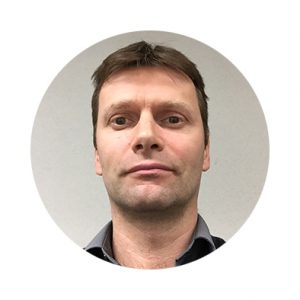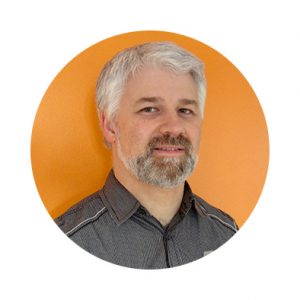array(3) {
[0]=>
object(WP_Post)#10323 (24) {
["ID"]=>
int(10326)
["post_author"]=>
string(2) "24"
["post_date"]=>
string(19) "2021-01-22 23:50:51"
["post_date_gmt"]=>
string(19) "2021-01-23 04:50:51"
["post_content"]=>
string(588) "The presentation will focus on stormwater zoning and will characterize this decision support tool as part of the stormwater management policy. After defining stormwater zoning, the presentation will focus on the issues of integrated stormwater management and the solutions to be implemented. The presentation will be illustrated with examples from French communities.
Research/Study carried out with the cooperation of:
Alain Brus / Marie Degrave / Véronique Ferrier / Yannis Ferro /Aurélie Gérolin / Nathalie Le Nouveau / Yann-Mikiel Ille / Serge Perdrix / Pierre Ramey. "
["post_title"]=>
string(78) "– Stormwater Zoning: A tool for Implementing Integrated Management in France"
["post_excerpt"]=>
string(0) ""
["post_status"]=>
string(7) "publish"
["comment_status"]=>
string(6) "closed"
["ping_status"]=>
string(4) "open"
["post_password"]=>
string(0) ""
["post_name"]=>
string(77) "le-zonage-pluvial-un-outil-de-mise-en-oeuvre-de-la-gestion-integree-en-france"
["to_ping"]=>
string(0) ""
["pinged"]=>
string(0) ""
["post_modified"]=>
string(19) "2021-03-04 19:44:24"
["post_modified_gmt"]=>
string(19) "2021-03-05 00:44:24"
["post_content_filtered"]=>
string(0) ""
["post_parent"]=>
int(0)
["guid"]=>
string(112) "https://americana.org/conferences/le-zonage-pluvial-un-outil-de-mise-en-oeuvre-de-la-gestion-integree-en-france/"
["menu_order"]=>
int(0)
["post_type"]=>
string(11) "conferences"
["post_mime_type"]=>
string(0) ""
["comment_count"]=>
string(1) "0"
["filter"]=>
string(3) "raw"
}
[1]=>
object(WP_Post)#14020 (24) {
["ID"]=>
int(11052)
["post_author"]=>
string(2) "24"
["post_date"]=>
string(19) "2021-02-15 09:43:40"
["post_date_gmt"]=>
string(19) "2021-02-15 14:43:40"
["post_content"]=>
string(909) "Saint-Charles Lake is Quebec City's main drinking water reservoir. Scientific studies reveal a state of concern and accelerated eutrophication. Since 2010, the runoff water from various tributaries has been qualified as dubious or bad. Considering these findings, the protection of this water resource is essential and the improvement of the runoff quality discharged into the lake becomes a priority. In order to do so, the City has implemented various green infrastructures in the sub-basins of the most degraded tributaries in order to reduce runoff quantity produced (infiltration), to slow down its flow (retention) and to reduce its pollutant load (treatment). The approach to improve storm water management will be presented, as well as an overview of the green infrastructure implemented, such as vegetated infiltration ditches, bio retention areas, artificial marshes and the monitoring put in place."
["post_title"]=>
string(108) "– Innovative Storm Water Management Approach to Protect St. Charles Lake and the Water Intake, Quebec City"
["post_excerpt"]=>
string(0) ""
["post_status"]=>
string(7) "publish"
["comment_status"]=>
string(6) "closed"
["ping_status"]=>
string(4) "open"
["post_password"]=>
string(0) ""
["post_name"]=>
string(116) "approche-novatrice-de-gestion-des-eaux-pluviales-pour-proteger-le-lac-saint-charles-et-la-prise-deau-ville-de-quebec"
["to_ping"]=>
string(0) ""
["pinged"]=>
string(0) ""
["post_modified"]=>
string(19) "2021-03-04 19:49:55"
["post_modified_gmt"]=>
string(19) "2021-03-05 00:49:55"
["post_content_filtered"]=>
string(0) ""
["post_parent"]=>
int(0)
["guid"]=>
string(151) "https://americana.org/conferences/approche-novatrice-de-gestion-des-eaux-pluviales-pour-proteger-le-lac-saint-charles-et-la-prise-deau-ville-de-quebec/"
["menu_order"]=>
int(0)
["post_type"]=>
string(11) "conferences"
["post_mime_type"]=>
string(0) ""
["comment_count"]=>
string(1) "0"
["filter"]=>
string(3) "raw"
}
[2]=>
object(WP_Post)#14030 (24) {
["ID"]=>
int(10322)
["post_author"]=>
string(2) "24"
["post_date"]=>
string(19) "2021-01-22 23:45:13"
["post_date_gmt"]=>
string(19) "2021-01-23 04:45:13"
["post_content"]=>
string(1819) "One of the most important impacts of a warmer climate is the projected increase in the frequency of extreme rainfall. A review of the recent scientific literature paints a complex picture in which the amplification of extremes depends on a multitude of factors. While some precipitation indices may follow the Clausius-Clapeyron (C-C) scaling of ~7% per 1°C of warming, there is substantial evidence of a larger scaling (Super C-C) for daily extremes, and even more for sub-daily extremes. However, none of the current measures adopted by various governing bodies to adapt Intensity-Duration-Frequency (IDF) curves to the future climate recognize the likely Super C-C scaling of extreme rainfall. These implications are even more important for the short duration rainfall that generates the extreme runoff in cities and small rural catchments. This presentation will also discuss the remaining scientific gaps and will offer technical recommendations for practitioners on how to adapt IDF curves to improve climate resilience.
Research/Study carried out with the cooperation of: Jean-Luc Martel, Hydrology, Climate and Climate Change Laboratory, École de technologie supérieure / François P. Brissette, Hydrology, Climate and Climate Change Laboratory, École de technologie supérieure / Magali Troin, Hydrology, Climate and Climate Change Laboratory, École de technologie supérieure & HydroClimat | TVT, Maison du Numérique et de l'Innovation / Philippe Lucas-Picher, Groupe de Météorologie de Grande Échelle et Climat (GMGEC), Centre National de Recherches Météorologiques (CNRM), Université de Toulouse & Centre National de la Recherche Scientifique (CNRS), Météo-France / Richard Arsenault, Hydrology, Climate and Climate Change Laboratory, École de technologie supérieure."
["post_title"]=>
string(120) "– Climate change and IDF (Intensity, Duration, Frequency) curves: An overview of science and guidelines for adaptation"
["post_excerpt"]=>
string(0) ""
["post_status"]=>
string(7) "publish"
["comment_status"]=>
string(6) "closed"
["ping_status"]=>
string(4) "open"
["post_password"]=>
string(0) ""
["post_name"]=>
string(131) "changements-climatiques-et-courbes-idf-intensite-duree-frequence-vue-densemble-de-la-science-et-lignes-directrices-pour-ladaptation"
["to_ping"]=>
string(0) ""
["pinged"]=>
string(0) ""
["post_modified"]=>
string(19) "2021-01-27 20:43:47"
["post_modified_gmt"]=>
string(19) "2021-01-28 01:43:47"
["post_content_filtered"]=>
string(0) ""
["post_parent"]=>
int(0)
["guid"]=>
string(166) "https://americana.org/conferences/changements-climatiques-et-courbes-idf-intensite-duree-frequence-vue-densemble-de-la-science-et-lignes-directrices-pour-ladaptation/"
["menu_order"]=>
int(0)
["post_type"]=>
string(11) "conferences"
["post_mime_type"]=>
string(0) ""
["comment_count"]=>
string(1) "0"
["filter"]=>
string(3) "raw"
}
}
– Stormwater Zoning: A tool for Implementing Integrated Management in France
The presentation will focus on stormwater zoning and will characterize this decision support tool as part of the stormwater management policy. After defining stormwater zoning, the presentation will focus on the issues of integrated stormwater management and the solutions to be implemented. The presentation will be illustrated with examples from French communities.
Research/Study carried out with the cooperation of:
Alain Brus / Marie Degrave / Véronique Ferrier / Yannis Ferro /Aurélie Gérolin / Nathalie Le Nouveau / Yann-Mikiel Ille / Serge Perdrix / Pierre Ramey.
– Innovative Storm Water Management Approach to Protect St. Charles Lake and the Water Intake, Quebec City
Saint-Charles Lake is Quebec City's main drinking water reservoir. Scientific studies reveal a state of concern and accelerated eutrophication. Since 2010, the runoff water from various tributaries has been qualified as dubious or bad. Considering these findings, the protection of this water resource is essential and the improvement of the runoff quality discharged into the lake becomes a priority. In order to do so, the City has implemented various green infrastructures in the sub-basins of the most degraded tributaries in order to reduce runoff quantity produced (infiltration), to slow down its flow (retention) and to reduce its pollutant load (treatment). The approach to improve storm water management will be presented, as well as an overview of the green infrastructure implemented, such as vegetated infiltration ditches, bio retention areas, artificial marshes and the monitoring put in place.
– Climate change and IDF (Intensity, Duration, Frequency) curves: An overview of science and guidelines for adaptation
One of the most important impacts of a warmer climate is the projected increase in the frequency of extreme rainfall. A review of the recent scientific literature paints a complex picture in which the amplification of extremes depends on a multitude of factors. While some precipitation indices may follow the Clausius-Clapeyron (C-C) scaling of ~7% per 1°C of warming, there is substantial evidence of a larger scaling (Super C-C) for daily extremes, and even more for sub-daily extremes. However, none of the current measures adopted by various governing bodies to adapt Intensity-Duration-Frequency (IDF) curves to the future climate recognize the likely Super C-C scaling of extreme rainfall. These implications are even more important for the short duration rainfall that generates the extreme runoff in cities and small rural catchments. This presentation will also discuss the remaining scientific gaps and will offer technical recommendations for practitioners on how to adapt IDF curves to improve climate resilience.
Research/Study carried out with the cooperation of: Jean-Luc Martel, Hydrology, Climate and Climate Change Laboratory, École de technologie supérieure / François P. Brissette, Hydrology, Climate and Climate Change Laboratory, École de technologie supérieure / Magali Troin, Hydrology, Climate and Climate Change Laboratory, École de technologie supérieure & HydroClimat | TVT, Maison du Numérique et de l'Innovation / Philippe Lucas-Picher, Groupe de Météorologie de Grande Échelle et Climat (GMGEC), Centre National de Recherches Météorologiques (CNRM), Université de Toulouse & Centre National de la Recherche Scientifique (CNRS), Météo-France / Richard Arsenault, Hydrology, Climate and Climate Change Laboratory, École de technologie supérieure.






